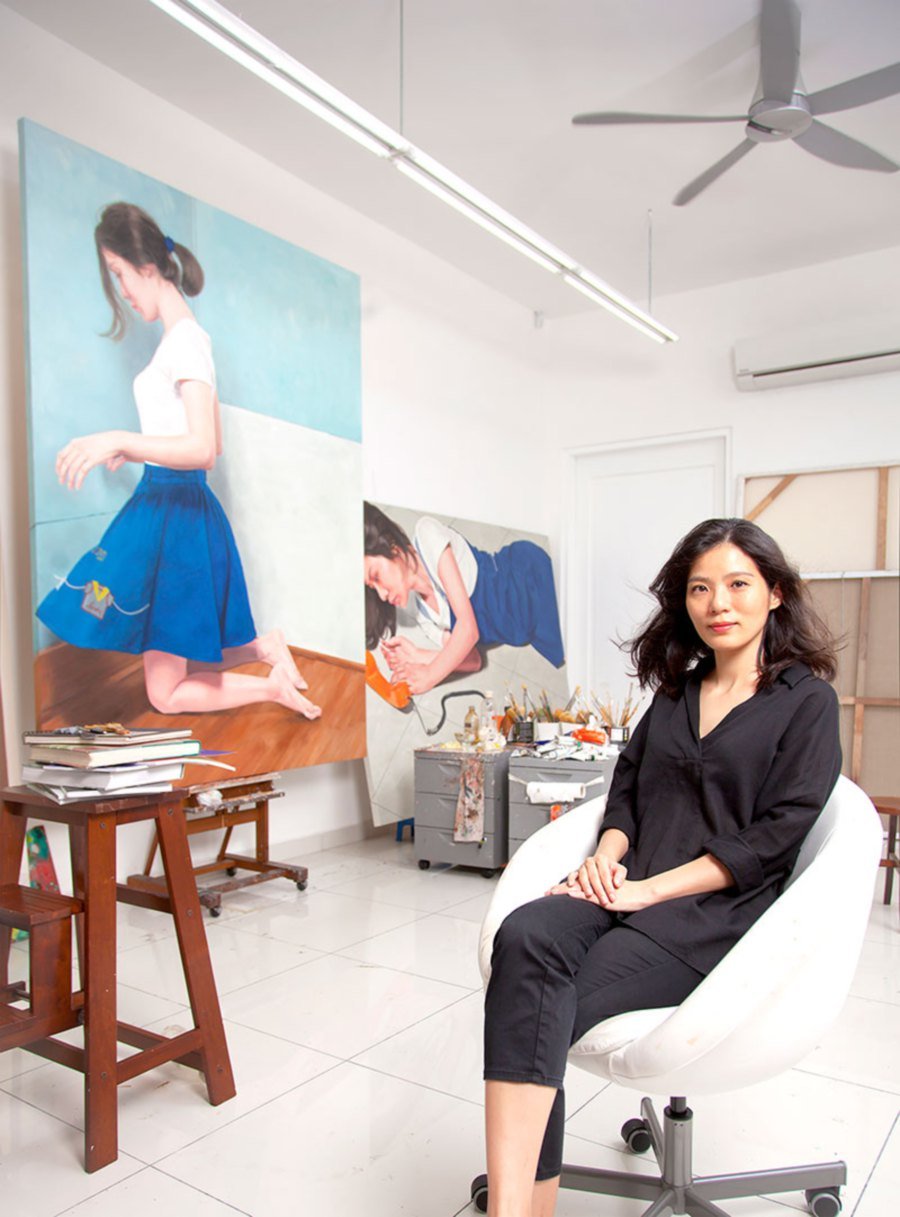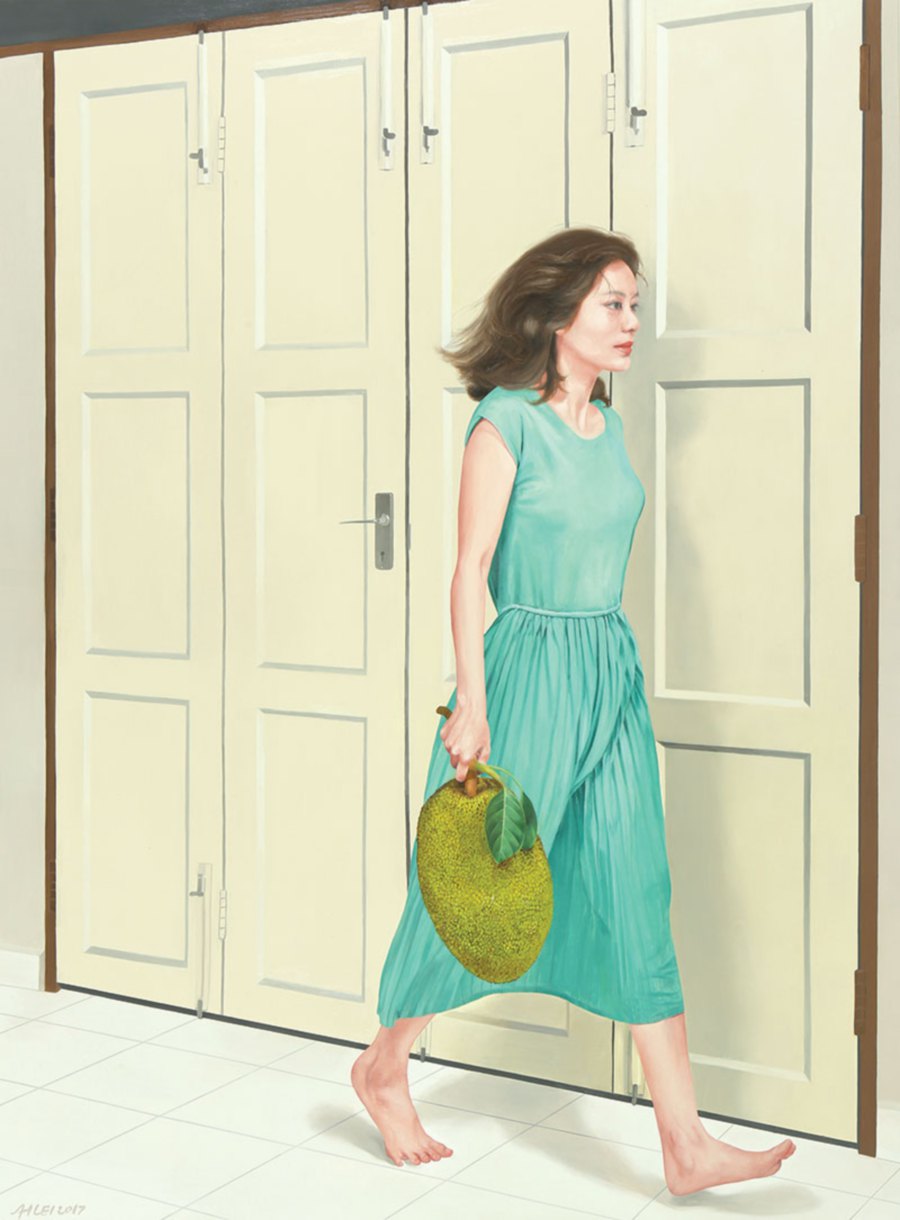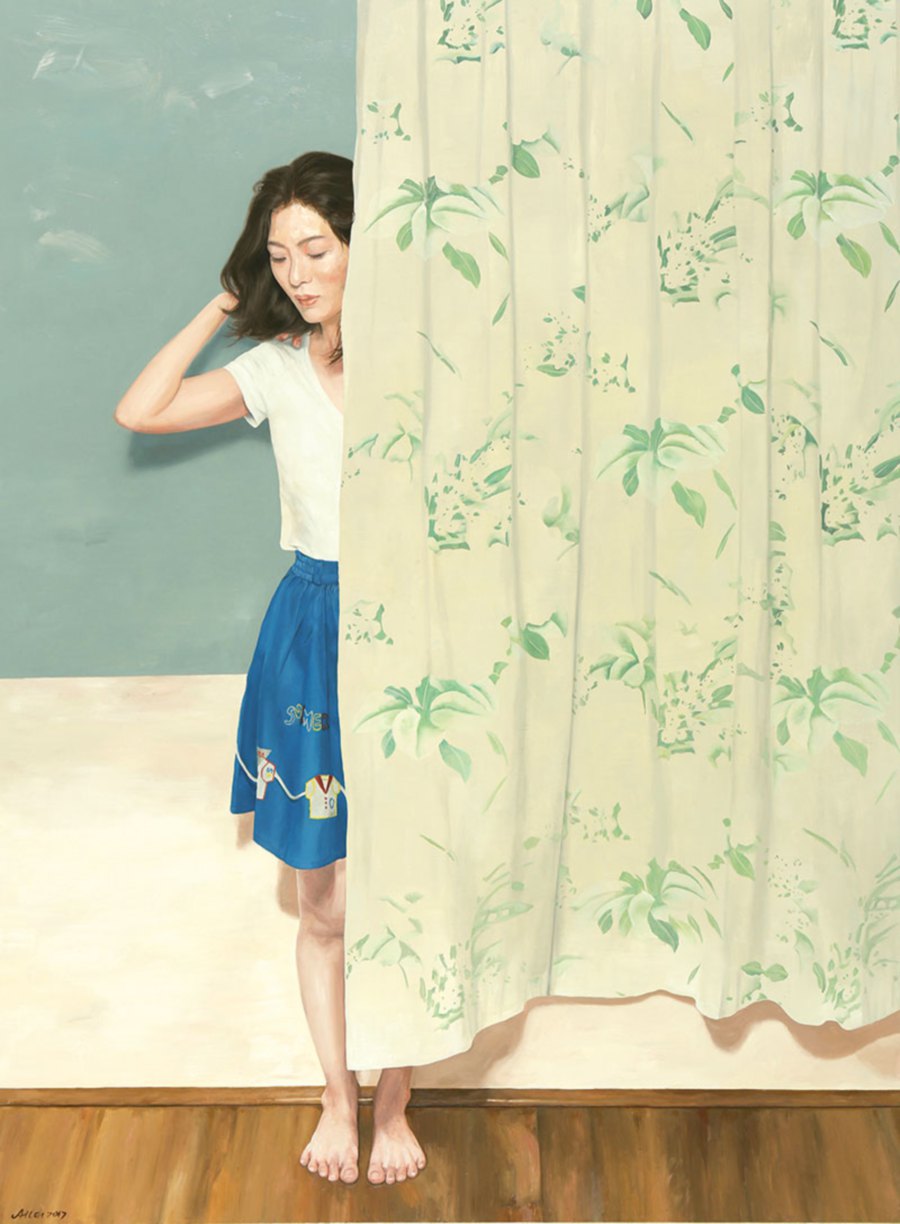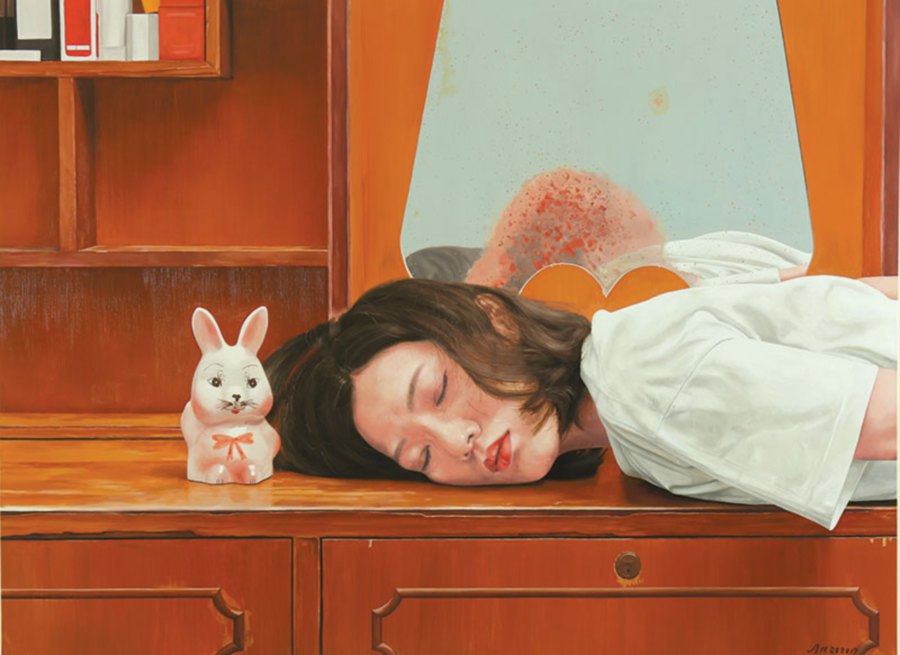
The loves we have for our childhood are mostly secret, privy to no one. They remain embedded in our minds and hearts. And every once in a while, we retreat into these memories, particularly when homesickness hits and hurts like gaping wounded skies. That or when you wake up and remember you’re an adult ‘gifted’ with those horrific words which have taken over everything — responsibility, duty, obligation, and the most dreaded: pay bills.
Chong Ai Lei’s Kuala Lumpur debut, ‘When I See You Again’, held recently at The Edge Galerie in Mont Kiara, KL, does exactly what we do inside our heads: the artist goes back to a time where joys have no remedies and life is about floating on high seas.
“It is royal happiness” she says.
Born and raised in Segamat, Johor in the inconspicuous Jementah town, Ai Lei’s childhood was beautifully-typical. The youngest of five girls, her father was a contractor and mother a devoted housewife. Her half brick, half wood home she shares with her four older sisters still stands today, the house her father built.
‘When I See You Again’ are seven large scale works of high-key colours and deep facades which educe an atmospheric intimacy. Lying on the Floor, Reflection in the Mirror, Rabbit Money Box, Telephone, Girl with Blue Skirt, Girl Jumping on Red Sofa, Jackfruit and Standing Behind a Curtain are all painfully-blissful longings.
But what makes these works exceptional is the artist’s innate gift for using veins of luminous colours which permit wonderful light to shine through. Using herself as the physical factor: Ai Lei at 33 in flashbacks to when she was 6, 8, 9. You need to really look at her paintings to realise how munificent they are. It’s unmitigated love, impromptu acts, thoughts which transfigure and bring forward an irresistible charm.

Memories bound together
Every object in her paintings still exists to this day; the curtain her mother sewed, that iconic amber phone, the worn red sofa, the dilapidated dressing mirror, the wooden floors, the multi-pronged doors, hardwood cabinets, mini face mirror and the first gift received from her father when she was 6 — a ceramic rabbit coin effigy. The cerulean pinafore and skirt seen in five of the works are her own clothes which her mother had carefully put away.

In Jackfruit and Girl Jumping on Red Sofa, Ai Lei wears her mother’s sea-green dress. She walks along the hallway carrying a ripe jackfruit, making her way to the kitchen whilst imagining that sweet scent once the fruit is pried open, its contents coated with flour and deep-fried.
‘When I See You Again’ is that psychological ether with every memory bound together, lovely tailoring and painterly scripts and arrangements, not so much imbued in quotes but rather they rivet into the works’ main factures. Ai Lei does not do this consciously, but one gets that Berthe Morisot-feeling when viewing her paintings; where normal childhood tomfooleries become something luminous and unforgettable.
What you cannot take the eyes away from is all that hair and face — sharp planes and slants, an almost careless spill of russet cascading waves. Is it blasphemous to say these images are sensual? Would one sound like a paedophile even thinking it? But then again, what Ai Lei did was pay homage to a time when being happy was just that: being happy. She fills her canvases with a ‘heaven’ of pre-adolescent imaginings and yearnings. What we read when seeing her illustrations is entirely beyond her control.

Wistful yearnings
After completing her primary and secondary education, Ai Lei left for Kuala Lumpur and completed her Diploma in Fine Arts at Dasein Academy. Her sisters were already in the city, completing their own degrees. She stayed with them until each went their separate ways. A life as a homemaker and wife were not in her cards. Ai Lei had wanted nothing more than to be an artist, a desire reinforced on that one fine day when she scratched a crude picture of a house on her father’s car. He found it amusing, realised she was ‘different’ from her sisters, and in his own quiet way, encouraged his youngest child to meet her destiny.
“My father doesn’t say much. He’d leave very early for work and put in long hours. In retrospect, it’s hard to hold a conversation when there are six females all speaking at the same time about a million things. My mother is a housewife. How she managed to keep the house spotless, cook and care for us all is incredible. The green dress seen in Jackfruit and Girl Jumping on the Sofa belonged to her.”

We’re not entirely sure if Ai Lei in that turquoise dress hopping on the sofa was a form of tribute to her mother. Housewives in particular, need to let off more steam. So if she does daily vaults on that carmine two-seater when no is home, is that not some kind of wonderful?
‘When I See You Again’ is that wistful relationships we have with ourselves. Ai Lei has triumphed here in the sense that each work, although tinged with the most subtle of melancholies, is abundantly filled with joy and bliss and that sense of freedom we ultimately lose once puberty rudely barges in and takes over.
Ai Lei’s handling of her subject matter — the almost stark backgrounds, the sultry lights which filter inside her home ever so charmingly, her indulging in everyday activities — is rephrased to expose something gorgeously fresh out of what is considered mundane.
She has fleshed out every single object to reflect her personal experiences. It’s a fragrance secretly sweet, and a secret it remains.

Nowhere do we see any other of her family members. In reality, being this alone, in complete solitude, is near impossible when sharing a domicile with four sisters and a set of parents.
Whether prone on the floor (Lying on the Floor) or being still on the stained dresser (Rabbit Money Box) with her treasured ‘piggy bank’, the artist’s renderings are deeply sophisticated, works of solid contours and in that wonderful way she breaks lines and forms. ‘When I See You Again’ in the end, is a body of works bathed in a gravity of emotions and subtle vacillations that keeps us rapt long after they’ve left the gallery’s walls. That, or weep like a lunatic for the loss of our own incorruptibility.
For the child we once were, and hopefully he/ she/ it still exists somewhere, an excerpt from Welsh metaphysical poet, Henry Vaughan’s The Retreate: -
O, how I long to travel back,
And tread again that ancient track,
That I might once more reach that plain,
Where first I left my glorious train
Some men a forward motion love,
But I by backward steps would move.
And when this dust falls to the urn,
In that state I came, return.

